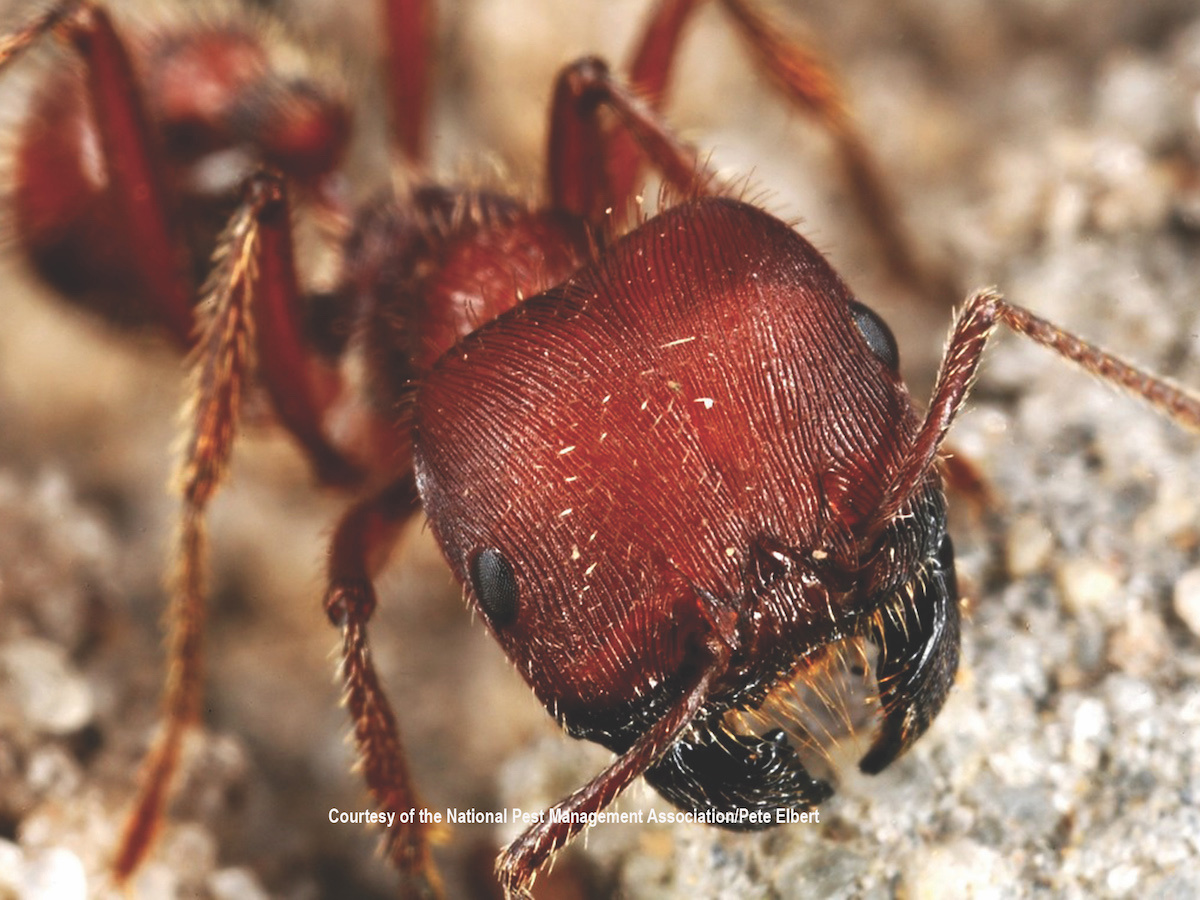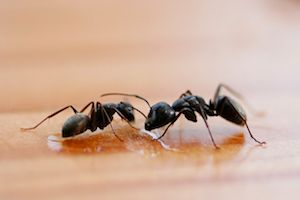Harvester Ants Pogonomyrmex spp.

Harvester Ant Identification
Color: Orange to red or brownish-black
Size: ¼ - ½” (4.7-11.5 mm)
Legs: Six
Antennae: Yes
Shape: Two-segmented; midsection has one pair of spines on the top (most species); many species have long hairs on their head forming a ‘beard’
Region: West of the Mississippi River and Florida
What is a Harvester Ant?
Harvester ants get their common name from their behavior of collecting or harvesting seeds as their primary food source. They are of concern in the urban setting because of their stings, and their habit of removing all vegetation from around their nests causing large bare spots in lawns. There are 22 species of harvester ants found in the United States. The most common types of harvester ants are the California harvester ant, Florida harvester ant, red harvester ant, black harvester ant and the Western harvester ant. All are limited to west of the Mississippi River except the Florida harvester ant. Keep reading to learn more about harvester ants, including whether harvester ants sting, as well as information on harvester ant control.
What Do Harvester Ants Look Like?
Workers, depending on species, are about 1/4 to 1/2 inches long, and range from red to brown and black in color. They have a two-segmented pedicel (the attachment between the thorax and abdomen), and most species have a pair of spines on the top of their midsection. Many species also have long hairs on the underside of their heads, which is beard-like in appearance.
Harvester ants have a painful sting and have even been known to kill animals that disturb their nests.
Harvester ant mounds are moderate to large in size depending on the species. Typically, large areas surrounding the mound are stripped of vegetation to prevent shading, as harvester ants usually remain within the nest during the hottest part of the day. Harvester ants exhibit two foraging patterns. The first is where the ants leave the nest individually and disperse in all directions using visual cues, and the second is where the ants leave the nest and forage along scent trails to find resources. Although they prefer seeds, harvester ants will also feed on insects.
Some harvester ants may occasionally move their nest in response to changes in climate. Nests can be up to 3 feet deep, ranging from one to multiple entrances. Mound surfaces are sometimes covered with small pebbles, charcoal, or fragments of dead vegetation.
There is a single queen in each colony that is relatively long-lived. For example, Florida harvester ant queens have been recorded to live 17 years and queens of the Idaho harvester ant average 17 years but have lived for up to 30.
Swarming typically takes place during the summer, especially in the afternoon after a rain event. In regard to the Florida harvester ant, the female swarmers gather on the surface of their nest, where they mate with males that fly in from surrounding nests. Once mated, they fly off to start a new colony.
In addition to affecting lawns, harvester ants are also known to sting when their nest is disturbed. Harvester ants have painful stings when irritated, and people who have allergic reactions to insect stings should be particularly careful of harvester ants.
Harvester ant nests are easy to locate by looking for bare soil areas. Mounds should be treated during the hottest part of the day or when the ants are least active outside of the nest.
Mounds can be successfully treated using appropriately labeled ant baits, but if a harvester ant infestation is suspected, it is best to contact a licensed harvester ant control professional.




